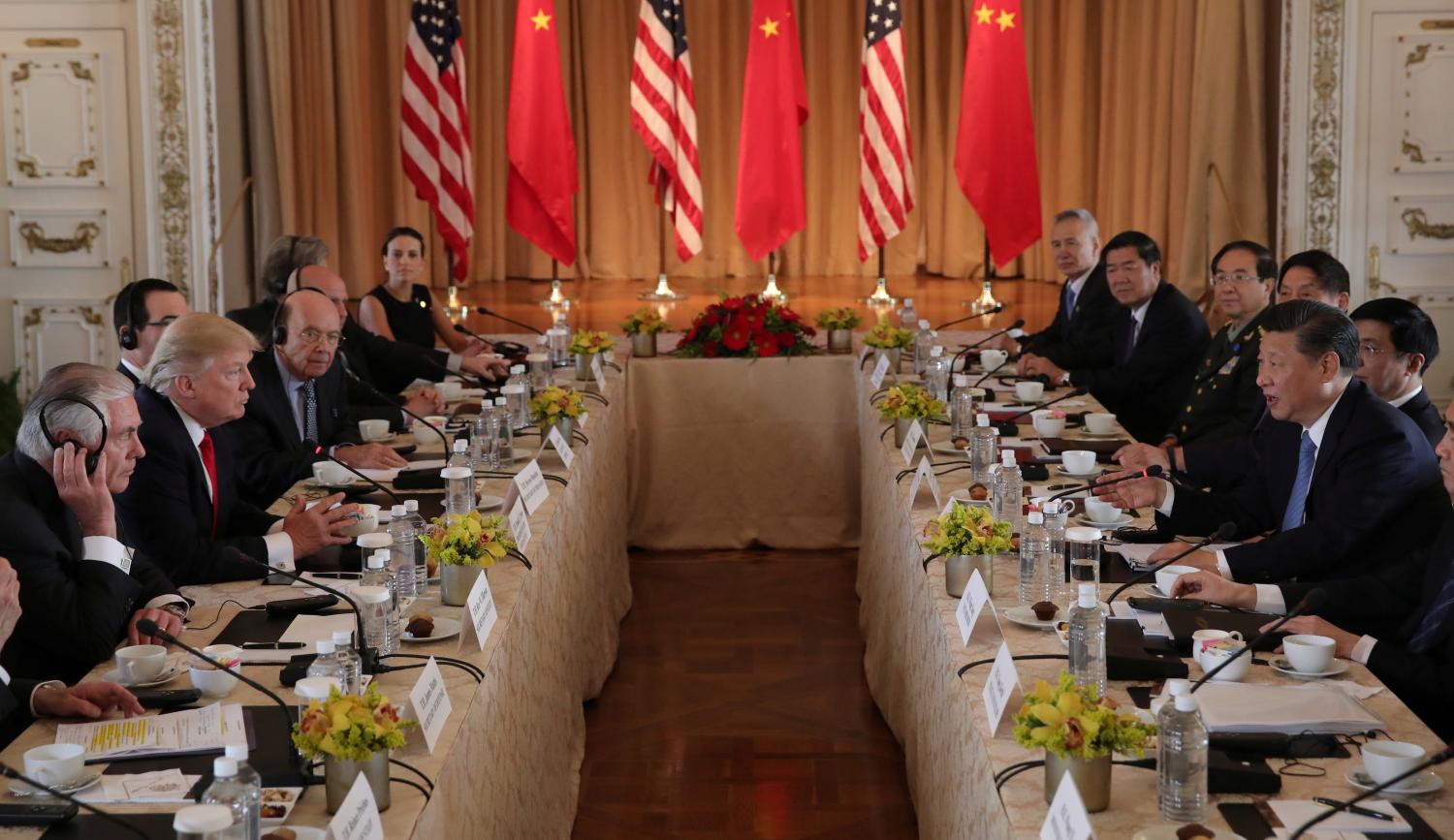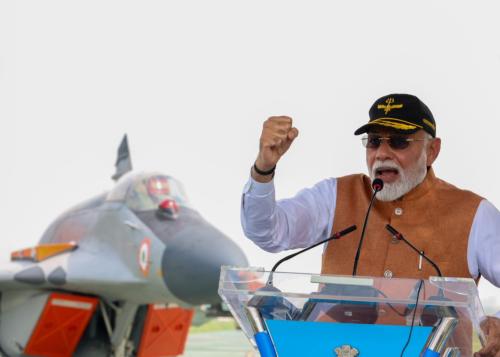The India Project and Center for Middle East Policy Studies on June 21 convened two panels to forecast Indian Prime Minister Narendra Modi’s upcoming trips to Washington (June 25-26) and Israel (early July). The first panel, which included former Indian Foreign Secretary Nirupama Rao, explored U.S.-India relations and examined what Modi will hope to get out of his meeting with President Trump. The second panel covered the relationship between India and Israel as New Delhi seeks to deepen relations with an important partner.
The two sessions touched on a broad array of topics, but a handful of key themes emerged:
- U.S.-India convergence
Though Modi and Trump have spoken three times on the phone, this will be their first face-to-face meeting. Given the administration’s limited interaction with Modi, Tanvi Madan, director of The India Project and a fellow in Foreign Policy at Brookings, observed that when Prime Minister Modi came to office in 2014, there was “much uncertainty about the approach he would take towards the U.S.”; now the situation is the reverse. New Delhi is wondering about how Mr. Trump will approach India. Ambassador Rao noted that Modi would try to establish “good chemistry” with President Trump and reassure him that India is a reliable partner for international cooperation in a variety of areas. The Trump administration inherits from past administrations “a relationship in a good state of health,” Rao stated. She remarked, “The conjunction of stars seem just right for this relationship.”
Moreover, Rao opined, “making America great again is not at all in dissonance with India’s rise.” In fact, she argued, supporting India’s growth can help U.S. interests and boost American jobs. Despite the potential for promises of major cooperation when Trump and Modi meet, Rao cautioned, “It’s also important that this not become the mother of all visits.”
- “Low velocity, high inertia”
Joshua White, associate professor at Johns Hopkins University’s School of Advanced International Studies, echoed some of Ambassador Rao’s optimism. He added his hopes that the Trump-Modi meeting will ensure that the U.S.-India relationship is “still special.” In White’s view, Modi will be seeking clarity on two major policy fronts: Washington’s stance on Pakistan and U.S.-China policy. On the former, will Washington take a tougher approach against terrorist groups in Pakistan targeting India? On the other hand, India and Washington are concerned that “Chinese investment in South Asia and Southeast Asia could make it difficult for a number of countries…to have an independent foreign policy.”
White said he remains hopeful for U.S.-India relations, which tend to proceed at a “low velocity, high inertia” pace. That is, bilateral diplomacy often starts out very slowly but once in motion, policy initiatives can move surprisingly quickly. White added that designating India a “major defense partner” during the Obama years, during which he served at the National Security Council, reflected a recognition of the progress U.S.-India relations had made. The meeting between Prime Minister Modi and President Trump presents an important opportunity for “revalidating some of the geopolitical foundations of our cooperation” and for establishing areas of convergence in their views on shaping the balance of power in Asia.
- Congress’ role
Jamie Fly, a senior fellow at the German Marshall Fund, discussed the role of Congress in advancing U.S.-India legislative exchange. Surprised at how few Congressional staff and opinion leaders have visited India, he insisted that regularizing dialogue in this area could strengthen the bilateral relationship, which he described as of the “utmost long-term strategic importance.” Fly voiced his concerns that the administration is “very much focused in the moment,” and “America first” is about delivering short-term gains. “But the real play is long term,” he stressed. One area for coordination, Fly suggested, would be for both sides to develop an approach to China’s Belt and Road Initiative. He concluded that if the United States wants to invest the time and energy in the already positive U.S.-India relationship, “This can be a long-term success story for this administration.”
- A note of caution
Richard Rossow, Wadhwani Chair in U.S.-India Policy Studies at the Center for Strategic & International Studies, injected a note of caution. He said he is “nervous” about friction on the economic side of the relationship, particularly the possibility that “minor grievances on trade could become a lot more prickly.” As Rossow put it, “The leader of the world’s wealthiest country [is] expecting the leader of one of the world’s developing countries to come here and give us benefits and gifts.” Speaking more broadly of the bilateral economic relationship, he added, “There’s no big picture thing that’s been tying us together” on the trade or investment front.
Tanvi Madan commented that Modi will be conscious of Trump’s desire for “tweetable wins”—deals to tout—from such visits.

- India’s new realism
Natan Sachs, director of the Center for Middle East Policy Studies at Brookings, discussed Modi’s historic trip to Israel, the first-ever of its kind by an Indian head of government. He laid out the regional context of Israel’s “rebalance” to Asia and noted that in Israel, there is “no controversy” about the relationship with India, which is regarded in a very positive light. As such, it’s “great politics domestically” and “cost-free” for Israeli politicians. He invoked his own experience as a young backpacker in India, explaining that many Israelis travel to India and have a very positive image of the country, facilitating state-to-state diplomacy.
Yet, as Sadanand Dhume of the American Enterprise Institute explained, relations have not always been as positive as they are today. Deepening strategic ties with Israel represents a major shift in Indian foreign policy from the era of his childhood, he recalled, when Indian passports prohibited travel to Israel. Dhume outlined the key constituencies in India which support a closer relationship with Israel and are enthused by Modi’s trip. More fundamentally, he added, deepening India-Israel ties indicate a broader shift in Indian foreign policy against the old elite and past policies of non-alignment.
Sachs, on his part, noted that, like India, there is a sense of pragmatism from the Israeli perspective as well. Israel understands that India will seek relations with Saudi Arabia or other Sunni Arab countries on account of its energy needs, and it doesn’t oppose them. Likewise, he noted, “For Israel, the growing relationship with India is part of a wide-ranging effort to deepen its relationship with major Asian powers including India, China, and Japan.” Yet Sachs pointed out that Israel does not want relations just with the BJP (the Bharatiya Janata Party, which Modi represents); it wants a strong relationship with India.
Tanvi Madan concluded that India has more leverage in its foreign relations than in the past and less asymmetrical relationships with external powers as its own power expands. India under Prime Minister Modi is engaging with other countries on a range of issues, from maritime and port security to counterterrorism and intelligence sharing. As several panelists mentioned, the relationship with the United States is crucial for India, and there are some significant strategic and economic drivers for the India relationship from the United States as well.
The Brookings Institution is committed to quality, independence, and impact.
We are supported by a diverse array of funders. In line with our values and policies, each Brookings publication represents the sole views of its author(s).





Commentary
As Modi travels to Washington and Israel, experts find opportunities and challenges
June 23, 2017